Washington State, nestled in the northwestern corner of the Western United States, is a land of diverse landscapes and vibrant communities, from the rain-soaked forests of the Olympic Peninsula to the rolling hills of the Palouse.
In addition to its stunning natural landscapes, the state is internationally renowned for its apple production and being the home of major corporations like Amazon, Microsoft, and Boeing.
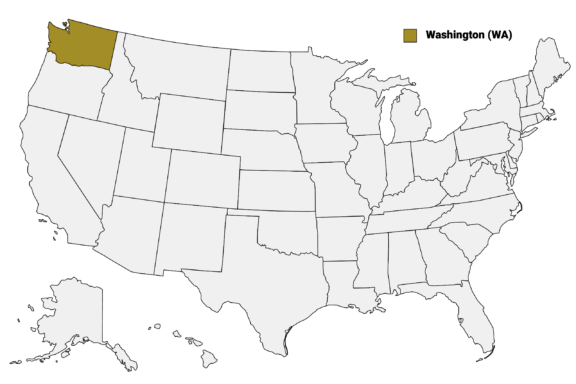
Washington is split into 39 counties, each with its unique character, culture, and natural beauty. These counties encompass bustling metropolitan areas, serene rural towns, majestic mountains, and rugged coastlines, offering a glimpse into Washington’s rich tapestry of life.
This post will guide you through the highlights of Washington’s counties, showcasing the unique qualities that make each one worth visiting. We’ll start with a Washington Counties Map before providing more detailed information about many of the state’s most notable counties.
Map of Washington Counties
Below is a map of the 39 counties of Washington (you can click on the map to enlarge it and to see the major city in each county).
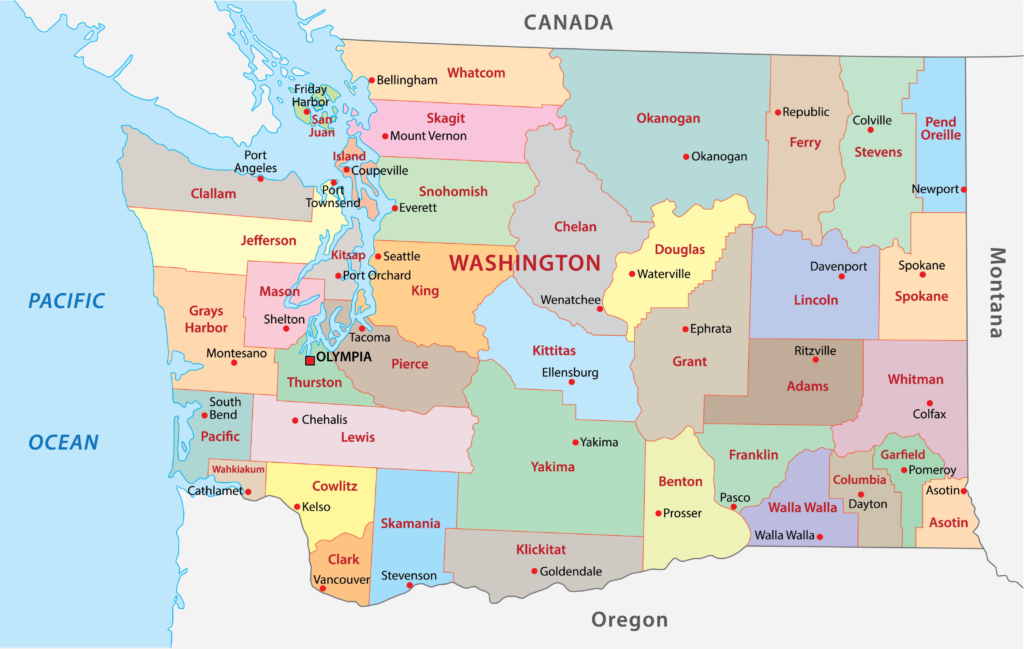
Interactive Map of Washington Counties
Click on any of the counties on the map to see its population, economic data, time zone, and zip code (the data will appear below the map). Data is sourced from the US Census 2021.
List of the Counties of Washington:
| County | Population | Per sq. km | Largest City |
|---|---|---|---|
| Adams County | 20,353 | 4.08 | Othello |
| Asotin County | 22,285 | 13.53 | Clarkston |
| Benton County | 204,551 | 46.45 | Kennewick |
| Chelan County | 78,508 | 10.38 | Wenatchee |
| Clallam County | 76,727 | 17.04 | Port Angeles |
| Clark County | 496,494 | 305.01 | Vancouver |
| Columbia County | 3,969 | 1.76 | Dayton |
| Cowlitz County | 109,457 | 37.03 | Longview |
| Douglas County | 42,622 | 9.05 | East Wenatchee |
| Ferry County | 7,198 | 1.26 | Republic |
| Franklin County | 95,313 | 29.64 | Pasco |
| Garfield County | 2,278 | 1.24 | Pomeroy |
| Grant County | 97,874 | 14.1 | Moses Lake |
| Grays Harbor County | 74,737 | 15.18 | Aberdeen |
| Island County | 85,938 | 159.16 | Oak Harbor |
| Jefferson County | 32,590 | 6.98 | Port Townsend |
| King County | 2,240,876 | 408.97 | Seattle |
| Kitsap County | 273,072 | 266.85 | Bremerton |
| Kittitas County | 44,147 | 7.42 | Ellensburg |
| Klickitat County | 22,478 | 4.64 | Goldendale |
| Lewis County | 81,214 | 13.05 | Centralia |
| Lincoln County | 10,798 | 1.8 | Davenport |
| Mason County | 64,964 | 26.14 | Shelton |
| Okanogan County | 41,966 | 3.08 | Omak |
| Pacific County | 22,974 | 9.5 | Raymond |
| Pend Oreille County | 13,302 | 3.67 | Newport |
| Pierce County | 910,225 | 210.7 | Tacoma |
| San Juan County | 17,631 | 39.14 | Friday Harbor |
| Skagit County | 128,228 | 28.61 | Mount Vernon |
| Skamania County | 11,973 | 2.79 | Carson |
| Snohomish County | 820,024 | 151.74 | Marysville |
| Spokane County | 531,477 | 116.31 | Spokane |
| Stevens County | 46,057 | 7.18 | Suncrest |
| Thurston County | 290,642 | 155.32 | Olympia |
| Wahkiakum County | 4,373 | 6.42 | Puget Island |
| Walla Walla County | 62,168 | 18.9 | Walla Walla |
| Whatcom County | 224,533 | 41.13 | Bellingham |
| Whitman County | 48,197 | 8.62 | Pullman |
| Yakima County | 255,151 | 22.94 | Yakima |
Largest Counties in Washington by Population
King County
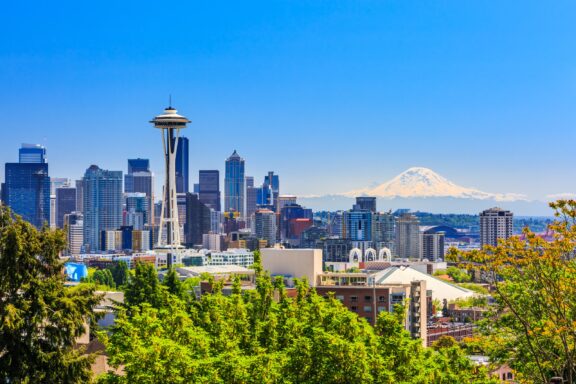
King County, established in 1852, is located in Washington state and stands as its most populous county. Originally named for William Rufus DeVane King, the county was renamed for Dr. Martin Luther King in a 1986 King County Council motion.
Seattle, the county seat, is known for its iconic Space Needle, vibrant Pike Place Market, and as a center for tech giants like Amazon and Microsoft. Although an urban hub, it is surrounded by natural beauty, including Puget Sound, Lake Washington, and the nearby Cascade and Olympic Mountains, offering endless outdoor activities from sailing to hiking.
The county is celebrated for its cultural diversity, with numerous festivals, museums, and theaters reflecting the community’s varied heritage. King County’s commitment to environmental sustainability is evident in its extensive park system and public transportation network, aiming to preserve the area’s natural resources while accommodating growth.
Education and innovation are key to the county’s identity, with the University of Washington providing leading research and development contributions.
Pierce County
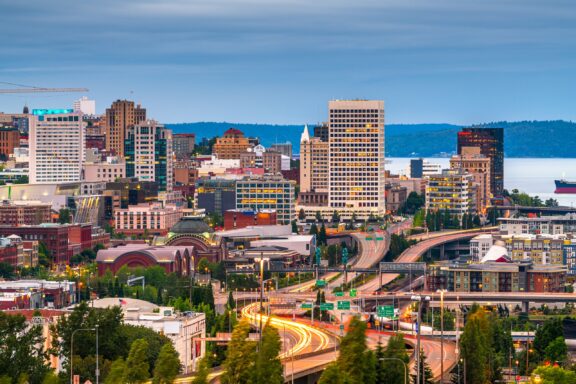
Pierce County, established in 1852, is Washington state’s second-most populous county. Tacoma serves as the county seat, offering a rich maritime heritage and a revitalized waterfront that includes the Museum of Glass, which showcases the region’s significant contributions to glass art.
The county is home to Mount Rainier National Park, a major natural landmark providing opportunities for outdoor recreation and drawing visitors from around the globe.
Pierce County also encompasses parts of Puget Sound, affording residents and tourists alike access to water-related activities such as boating and fishing. The county’s diverse landscape ranges from the urban settings of Tacoma and Puyallup to the serene, forested areas of the Peninsula and Key Peninsula.
Joint Base Lewis-McChord, located within the county, is a major military installation and a key component of the local economy. Educational institutions like the University of Washington Tacoma and Pacific Lutheran University contribute to the community’s vibrant academic atmosphere.
Snohomish County
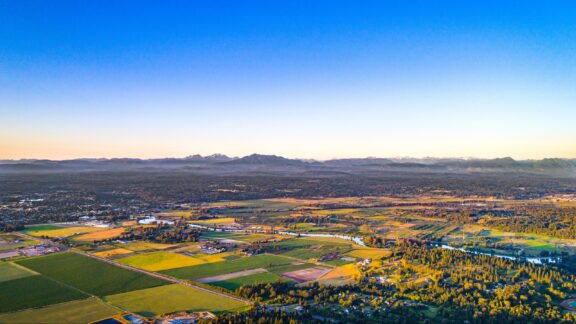
Snohomish County, established in 1861, is located in northwest Washington State, directly north of King County. Everett, the county seat, is notable for its bustling waterfront and the Boeing Everett Factory, the world’s largest building by volume, where iconic Boeing aircraft are assembled.
The county offers a wealth of natural beauty, including part of the Cascade Range, with opportunities for outdoor activities such as hiking, skiing at Stevens Pass, and exploring the scenic San Juan Islands via ferry from the western part of the county.
Snohomish County is also home to the historic town of Snohomish, known for its well-preserved Main Street, antique shops, and skydiving center, offering a glimpse into the region’s past while supporting vibrant local commerce and adventure tourism.
The Centennial Trail provides residents and visitors a place for walking, biking, and horseback riding, stretching from the city of Snohomish north to Skagit County. With its combination of economic opportunities, natural landscapes, and recreational activities, Snohomish County embodies the dynamic and diverse character of the Pacific Northwest.
Spokane County
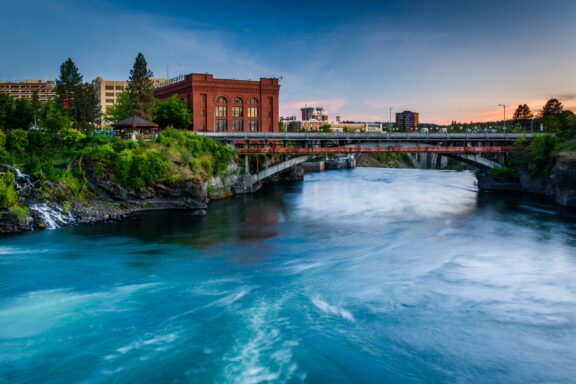
Spokane County, created in 1858 in Eastern Washington, is anchored by the city of Spokane, the state’s second-largest city. Known for the stunning Spokane Falls in the heart of downtown, the city and county offer a blend of urban living and access to the great outdoors. Spokane hosts the Lilac Festival, an annual event celebrating the region’s history and community spirit with a parade, music, and food.
The county features the Turnbull National Wildlife Refuge, a haven for wildlife enthusiasts, and the Spokane River Centennial Trail, which provides miles of paths for walking, biking, and running. Spokane County is also a gateway to the Rocky Mountains and the Inland Northwest’s lakes and forests, offering year-round recreational activities including skiing at Mount Spokane and boating on Lake Coeur d’Alene.
Higher education plays a significant role in the county’s culture and economy, with institutions such as Gonzaga University and Eastern Washington University located within its boundaries. Spokane County’s mix of cultural events, natural beauty, and educational opportunities contributes to its standing as a pivotal area in Washington.
Smallest Counties in Washington by Population
Garfield County
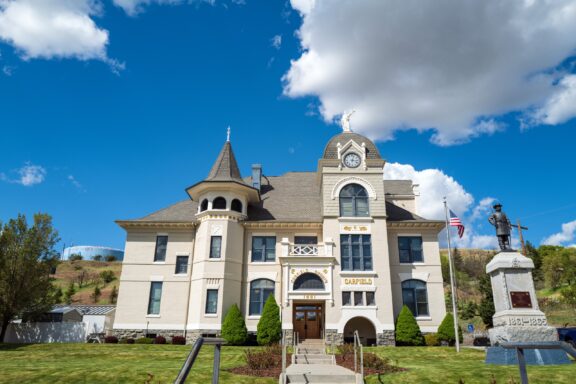
Garfield County, established in 1881, is Washington’s least populous county, located in the southeastern part of the state. The county seat, Pomeroy, is nestled in a scenic valley, offering a glimpse into the area’s agricultural and pioneering heritage. Garfield County is characterized by its rolling hills and fertile farmlands, primarily producing wheat and legumes.
The county offers outdoor activities with its close proximity to the Umatilla National Forest, providing trails for hiking, mountain biking, and camping amidst its picturesque landscapes. The Snake River forms the county’s southern boundary, presenting opportunities for fishing, boating, and water sports.
Pomeroy maintains a historic main street that reflects its late 19th-century origins, with buildings that have been preserved and repurposed as shops, restaurants, and local businesses, contributing to the small-town charm and community spirit of Garfield County.
Columbia County
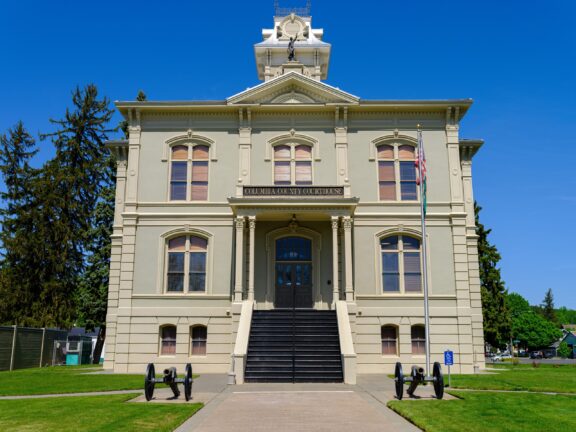
Columbia County, separated from Walla Walla County in 1875, is situated in southeastern Washington, with Dayton as its county seat. Dayton is recognized for its well-preserved historical downtown, boasting a collection of buildings listed on the National Register of Historic Places, and it proudly hosts the oldest working courthouse in the state.
The county is embraced by the rolling hills of the Palouse, a region known for its agricultural productivity, especially in wheat and barley. The Tucannon River winds through Columbia County, offering fishing, camping, and hiking opportunities in a serene setting.
Columbia County also celebrates its heritage with the annual Dayton Days, featuring a parade, rodeo, and other community events that bring together residents and visitors. The Bluewood Ski Resort, located within the county’s boundaries, provides winter sports enthusiasts with slopes suited for various skill levels, adding to the county’s recreational attractions.
Wahkiakum County
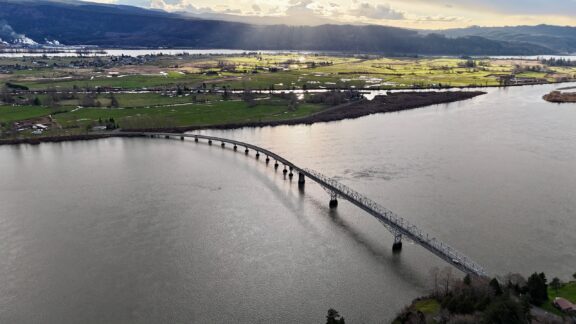
Wahkiakum County, established in 1854, is located in the southwestern part of Washington State, bordering the Columbia River. Cathlamet, the county seat, is a picturesque town that offers a glimpse into the area’s rich history and natural beauty. The town and its surroundings are known for their quiet, rural character and strong sense of community.
The county is primarily rural, with a landscape dominated by forests, farmlands, and waterways. The Columbia River provides ample opportunities for fishing, boating, and observing wildlife, making it a popular destination for outdoor enthusiasts.
Wahkiakum County’s Julia Butler Hansen Refuge for the Columbian White-Tailed Deer is a notable conservation effort, protecting and studying this endangered species. Additionally, the county’s scenic byways, including State Route 4, offer breathtaking views of the Columbia River and access to several small, charming communities along its banks.
Local events, such as the Bald Eagle Days in Cathlamet, celebrate the county’s natural heritage and provide residents and visitors with a chance to connect over shared interests in the environment and local culture.
Other Notable Washington Counties
Whatcom County
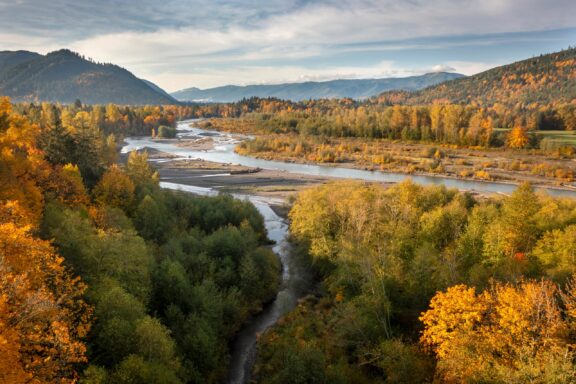
Whatcom County, located in the northwest corner of Washington State, is known for its dynamic blend of outdoor beauty and vibrant cultural life, centered around the city of Bellingham. With its proximity to the Canadian border, the county serves as a gateway to international travel and commerce.
The county’s diverse landscape includes the majestic Mount Baker, offering skiing and snowboarding in winter and hiking trails in summer. The San Juan Islands, accessible by ferry from Whatcom County, provide stunning maritime adventures, whale watching, and kayaking opportunities.
Bellingham, the county seat, is a lively college town with Western Washington University contributing to its active arts scene, educational opportunities, and community events. The city’s historic Fairhaven district is known for its unique shops, restaurants, and the annual Ski to Sea race finish line, which brings together athletes and spectators from across the region.
Whatcom County’s commitment to preserving its natural resources is evident in its extensive park system and initiatives like the Whatcom Land Trust, which seeks to protect the area’s ecological diversity.
Skagit County
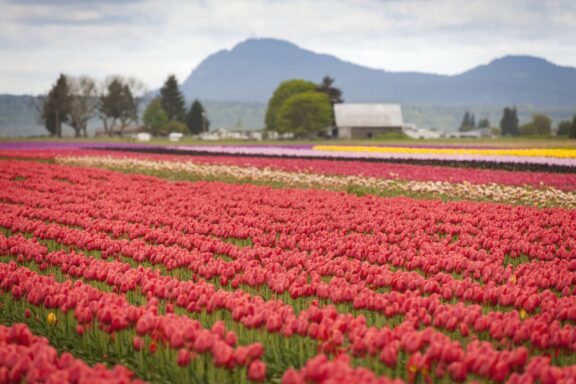
Skagit County, nestled in the northwestern part of Washington State, captivates visitors and residents with its agricultural bounty and natural splendor. The county seat, Mount Vernon, is particularly renowned each spring for the Skagit Valley Tulip Festival, which transforms the landscape into a vibrant tapestry of colors, drawing crowds from around the globe.
The county’s geography spans from the saltwater shores of the Puget Sound to the summit of the Cascade Mountains, including portions of the North Cascades National Park, one of the largest national parks in the US. This diverse environment supports a variety of outdoor activities, from kayaking in the Padilla Bay National Estuarine Research Reserve to hiking along the Pacific Crest Trail.
Agriculture remains a vital part of Skagit County’s economy and cultural heritage, with fields of tulips, daffodils, and crops like potatoes and berries marking its landscape. The region’s farmlands also contribute to a growing farm-to-table movement, supported by local farmers’ markets and restaurants.
Skagit County’s rich indigenous history is celebrated and preserved through cultural sites and events, highlighting the deep connection between the land and its people. The annual Skagit Eagle Festival in Concrete draws visitors to marvel at bald eagles along the Skagit River, further showcasing the county’s commitment to wildlife conservation and outdoor education.
Clallam County
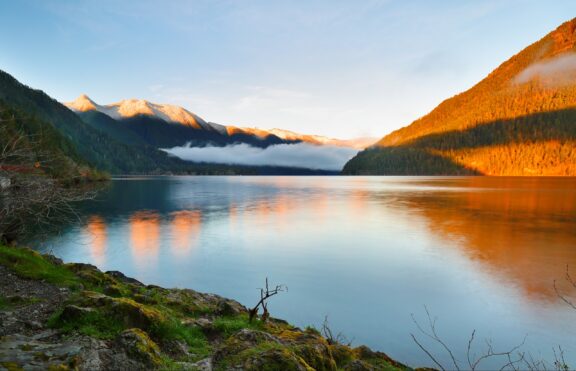
Clallam County, on the Olympic Peninsula in Washington State, is framed by the Pacific Ocean to the west and the Olympic Mountains to the south. The county seat, Port Angeles, serves as a gateway to Olympic National Park, offering unparalleled access to diverse ecosystems, including temperate rainforests, alpine ridges, and rugged coastal beaches.
The park’s vast wilderness provides endless opportunities for outdoor adventures, from hiking the trails of the Hoh Rainforest to exploring the tidal pools of Rialto Beach. Hurricane Ridge, near Port Angeles, offers panoramic views of the park and is a popular spot for skiing and snowboarding in the winter and hiking in the summer.
The Makah Reservation, located at the northwestern tip of the county in Neah Bay, enriches the area with its cultural heritage and history. The Makah Cultural and Research Center houses artifacts from the Ozette Archaeological Site, providing insights into the lives of the Makah people over centuries.
Clallam County’s economy benefits from tourism, forestry, and fishing, with the annual Dungeness Crab Festival in Port Angeles celebrating the region’s maritime culture. The county’s natural beauty and cultural richness make it a compelling destination for those seeking both adventure and a deeper understanding of Pacific Northwest heritage.
Chelan County
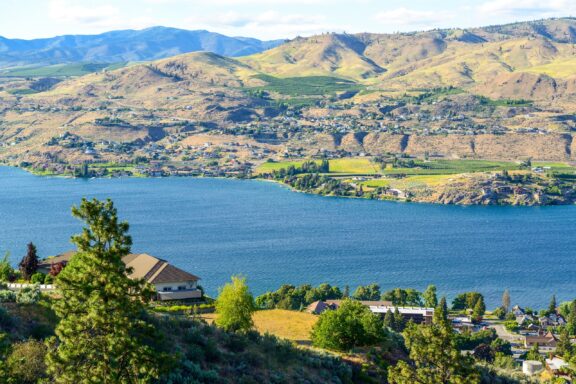
Chelan County, situated in central Washington State, is known for its stunning natural landscapes centered around Lake Chelan, one of the nation’s deepest lakes. The county seat, Wenatchee, lies at the confluence of the Wenatchee and Columbia rivers, surrounded by orchards and vineyards that bolster the local economy with their produce.
Lake Chelan offers a plethora of water-based recreational activities, including boating, water skiing, and fishing. The lake extends into the heart of the North Cascades, providing access to remote wilderness areas for hiking and camping.
The city of Leavenworth, a Bavarian-themed town in Chelan County, attracts visitors with its alpine architecture, seasonal festivals, and outdoor concerts. This unique town enhances the county’s tourism industry, drawing guests year-round for its Christmas lighting festival, Oktoberfest, and outdoor recreational opportunities.
Wenatchee, known as the apple capital of the world, hosts the Washington State Apple Blossom Festival, celebrating the importance of apple orchards to the region’s culture and economy. The area’s commitment to outdoor activities is further exemplified by the Apple Capital Loop Trail, which offers miles of scenic biking and walking paths along the river.
Walla Walla County
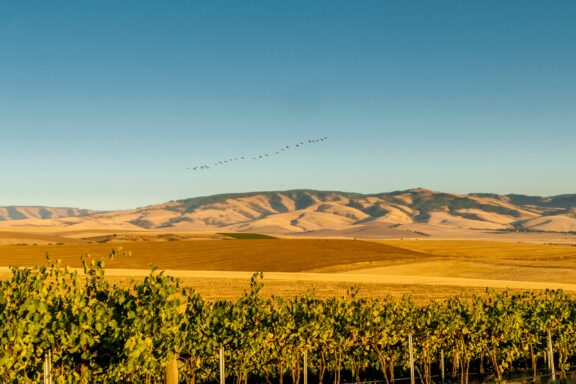
Walla Walla County, located in southeastern Washington State, is celebrated for its rich agricultural land and vibrant wine industry. The county seat, Walla Walla, is renowned for its friendly community, historic downtown area, and as a haven for wine enthusiasts, boasting over 100 wineries and tasting rooms that highlight the region’s exceptional viticulture.
The county’s commitment to education and the arts is anchored by Whitman College, offering cultural events, lectures, and art exhibitions to the community. Walla Walla’s agricultural roots are not only evident in its vineyards but also in its fields of sweet onions, known nationally as the Walla Walla Sweet Onion, celebrated annually with a festival dedicated to this unique crop.
Outdoor recreation in Walla Walla County includes golfing, cycling, and exploring the scenic Blue Mountains, offering trails for hiking and opportunities for wildlife observation.
More About Counties in Washington: FAQs
Which county in Washington has the highest peak?
Pierce County is home to Mount Rainier, the highest peak in Washington, whose peak is 14,410 feet (4,392 meters) tall.
What is the smallest county in Washington by area?
San Juan County is the smallest by area, comprising several islands and covering 174 square miles (451 km2).
Where is the Hanford Site located in Washington?
The Hanford Site is located in Benton County.
Which Washington county is home to the Grand Coulee Dam?
The Grand Coulee Dam is located in Grant County.
Where is the Washington State Fair held?
The Washington State Fair is held in Pierce County, in the city of Puyallup.
Image Sources and Copyright Information
- Aerial View of a Serpentine Bridge Over a River Connecting to Lush Green Lands: © Jrob622/Shutterstock
- Aerial View of the Serene Nooksack River Valley in Whatcom County During Autumn: © Edmund Lowe Photography/Shutterstock
- Vibrant Tulip Fields with Scenic Mountain Backdrop in Skagit Valley: © Edmund Lowe Photography/Shutterstock
- Serene Sunrise Over Lake Crescent in Clallam County with Misty Mountains: © Jay Yuan/Shutterstock
- Scenic View of Lake Chelan with Surrounding Hills and Residential Area in Chelan County, Washington, USA: © Nadia Yong/Shutterstock
- Golden Hour Over Vineyard with Flock of Birds Flying Above Rolling Hills: © Danita Delimont/Shutterstock